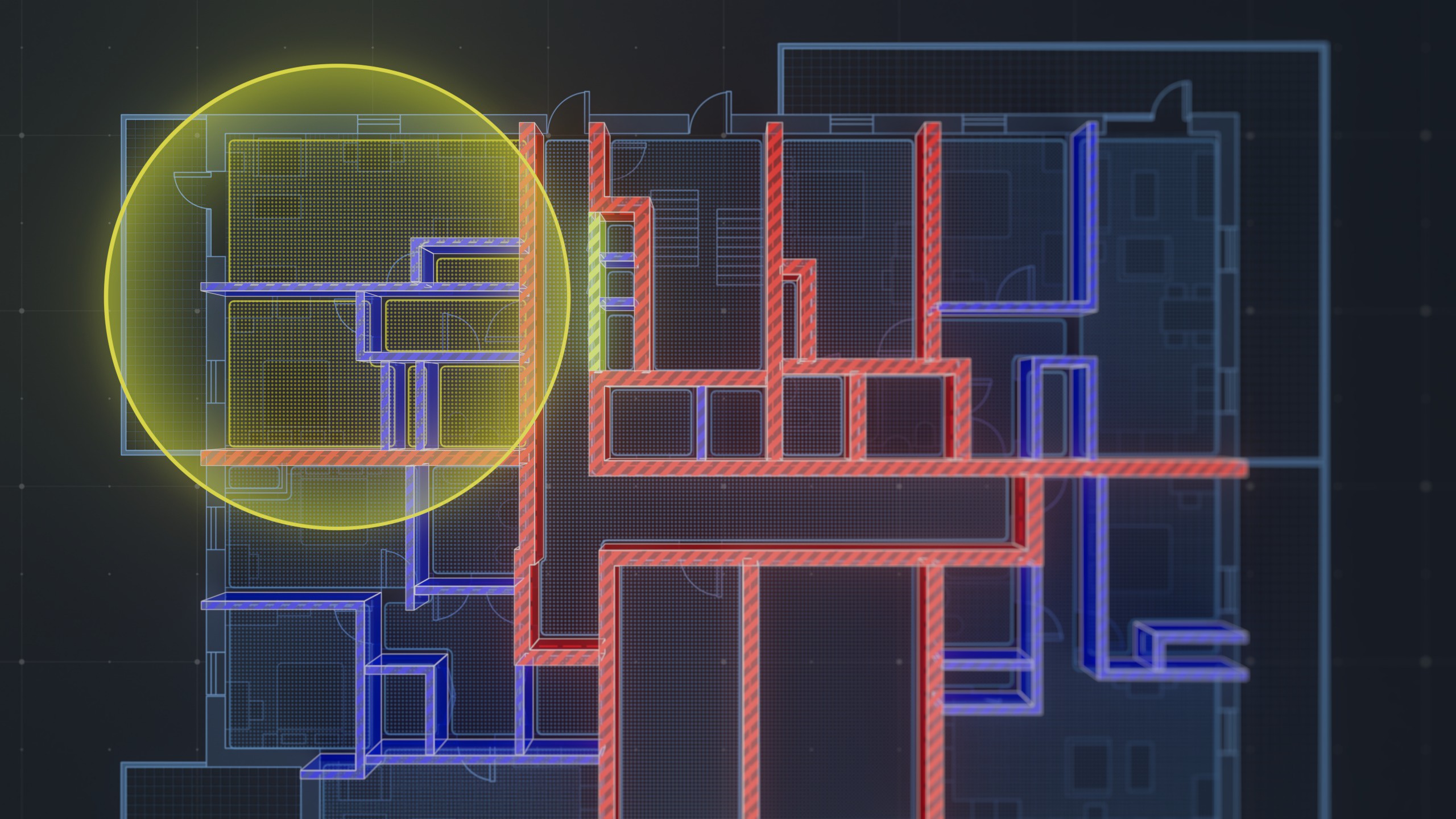Accurate cost estimation is essential in any flooring project, whether it’s for a residential renovation or a large-scale commercial building. By properly estimating the cost of materials, labor, and equipment, you can prevent budget overruns and ensure smooth project execution. The flooring takeoff process plays a crucial role in this, involving the detailed measurement and assessment of all flooring materials needed for a project.
In today's world, technology has transformed the estimation process, making it more efficient and accurate. Using advanced software tools, estimators can reduce the margin for error, saving time and money on flooring projects.
Types of Flooring Materials
Choosing the right type of flooring is one of the most important decisions in a project. Here are the common types of flooring materials:
- Hardwood: Classic and durable, offering high value but comes with a higher cost.
- Carpet: Soft underfoot and versatile in design, but prone to wear and staining.
- Laminate: Affordable and easy to install, resembling hardwood with lower maintenance.
- Tile: Water-resistant and ideal for high-traffic areas, but requires skilled labor for installation.
- Vinyl: Budget-friendly, durable, and available in a wide variety of designs.
- Stone Flooring: Luxurious and long-lasting, but often expensive and difficult to install.
Understanding Flooring Takeoff
Flooring takeoff refers to the process of measuring and quantifying all materials needed for a flooring project. The purpose is to ensure that the right amount of materials is ordered and used efficiently, minimizing waste. There are two main types of takeoff: manual and digital. While manual takeoff involves measuring by hand, digital takeoff leverages software for faster and more precise calculations.
Key steps in a flooring takeoff include measuring the floor area, identifying material quantities, and accounting for waste.
Components of Flooring Cost Estimation
An accurate flooring estimate accounts for several factors:
- Material Costs: This includes the type and quality of flooring, as well as any adhesives or underlayment required.
- Labor Costs: Depending on the material, skilled labor for installation can be a significant portion of the overall cost.
- Equipment and Machinery Costs: Special equipment may be required for certain types of flooring installations, adding to the cost.
- Transportation and Logistics: The cost of delivering materials to the site is often overlooked, but it can add up, especially for large projects.
Factors Affecting Flooring Costs
Flooring costs can vary significantly based on:
- Room Size and Shape: Irregularly shaped rooms or those with stairs may require more complex cutting and installation.
- Flooring Material and Quality: Higher-end materials will naturally increase costs.
- Installation Method: Different installation techniques require varying levels of expertise and labor.
- Site Preparation and Demolition: Pre-existing flooring may need to be removed or subflooring prepared before installation.
- Market Price Fluctuations: Prices for flooring materials can vary with supply chain disruptions or market demand.
Tools for Flooring Takeoff and Cost Estimation
There are both manual and digital tools used in the takeoff process. Manual tools include rulers and measuring tapes, but digital software solutions are now widely used due to their accuracy and speed. Software tools, like Kreo Software, offer numerous benefits such as automatic calculations, instant measurements, and easy adjustments for real-time updates. They streamline the process, reduce errors, and ultimately save time and money.
Step-by-Step Guide to Performing a Flooring Takeoff
To perform a successful flooring takeoff, follow these steps:
- Measure Floor Dimensions: Start by measuring the floor area accurately, including any irregularities in the room’s shape.
- Identify Material Quantities: Calculate the amount of flooring material required based on the dimensions.
- Factor in Waste and Overage: Always add a percentage for waste (typically around 10%) to account for cutting and material defects.
- Calculate Labor and Equipment Needs: Factor in labor hours and any equipment necessary for installation.
The Benefits of Using Kreo Software for Flooring Takeoff and Estimation
Kreo Software is an innovative tool for flooring professionals. It’s designed to streamline the takeoff and estimation process using AI and cloud-based technology.
Key features of Kreo include:
- AI-Powered Takeoff: Automated area detection and instant takeoff generation.
- Fast Estimates: Quickly generate precise estimates with minimal input.
- Real-Time Adjustments: Make changes to plans and see the results instantly.
- Customizable Reports: Generate dynamic reports and spreadsheets linked directly to measurements.
Compared to manual methods or other software, Kreo stands out for its speed, precision, and ease of use, making it the preferred choice for large-scale projects.
Digital vs. Manual Takeoff: Which is Better?
When comparing manual and digital takeoff methods, several factors come into play:
- Accuracy: Digital tools provide more precise measurements and reduce human error.
- Time Efficiency: Digital takeoff is significantly faster, especially for large or complex projects.
- Cost Comparison: While digital tools may have an initial cost, they often save money by reducing errors and wasted materials.
- Large-Scale Projects: For bigger jobs, digital takeoff is the clear winner due to its ability to handle large amounts of data quickly and accurately.
Common Mistakes in Flooring Takeoff and How to Avoid Them
Avoid these common mistakes in flooring takeoff:
- Miscalculating Dimensions: Always double-check your measurements and ensure accurate scaling in digital plans.
- Underestimating Waste: Ensure you add an appropriate percentage for waste, as underestimating can cause costly delays.
- Overlooking Hidden Costs: Consider all aspects, such as transportation and equipment, in your estimate.
- Ignoring Labor Variability: Labor costs can vary by region and project complexity, so adjust accordingly.
Flooring Estimation for Residential vs. Commercial Projects
There are key differences between residential and commercial flooring projects, such as:
- Project Scope: Commercial projects are usually larger and require more coordination.
- Material Variances: Commercial projects may use more durable materials for high-traffic areas.
- Labor Cost Differences: Commercial jobs often require specialized labor, increasing costs.
- Examples: Residential estimates may focus on individual rooms, while commercial projects often cover large floor spaces, like offices or retail stores.
How to Adjust Estimates for Project Complexities
Projects can present various complexities that need adjustments in the estimation process, such as:
- Handling Irregularly Shaped Rooms: Factor in more material for complex shapes.
- Multi-Level Buildings: Consider the extra labor and equipment needed for multi-floor projects.
- Special Installation Needs: Account for unique requirements like underfloor heating.
- Site Conditions: Adjust estimates based on site access or subfloor conditions.
Benefits of Accurate Flooring Takeoff and Cost Estimation
An accurate flooring takeoff and cost estimation provides numerous advantages:
- Preventing Budget Overruns: Staying within the budget is key to project success.
- Efficient Material Usage: Reducing waste saves money and resources.
- Improving Project Planning and Execution: Accurate estimates allow for better scheduling and resource allocation.
- Enhancing Client Satisfaction: Accurate, transparent estimates help build trust with clients.
Frequently Asked Questions (FAQs)
What is flooring takeoff?
Flooring takeoff is the process of measuring and calculating the amount of material needed for a flooring project.
How accurate is Kreo Software for takeoff?
Kreo Software uses AI to deliver highly accurate takeoff results, minimizing human error.
How can I reduce my flooring costs?
Careful material selection, minimizing waste, and using efficient tools like Kreo can reduce flooring costs.
What types of projects benefit most from digital takeoff tools?
Large, complex, and commercial projects benefit the most from digital takeoff due to the scale and need for precision.
Is manual takeoff still relevant in 2024?
While manual takeoff is still used, digital tools have largely replaced it for better accuracy and efficiency.
How do I calculate the right amount of flooring material?
Use detailed measurements, account for waste, and rely on accurate takeoff tools like Kreo to calculate the right amount of material.




.png)